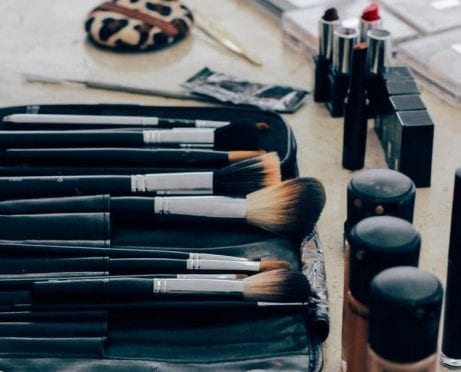
It was a Friday night, and I was getting ready to go out for dinner and cocktails with a group of friends. I stood in my walk-in closet – packed to the gills with an unreasonable amount of clothes – and sighed. I had the same complaint that nearly every woman is familiar with:
“Ugh — I have nothing to wear!” I told my husband, who honestly couldn’t care less if I decided to head to the restaurant wearing a paper sack.
Learn How to Invest Confidently — Download This Free App >>
Okay, so the problem wasn’t that I didn't have anything to put on my body in a literal sense. In fact, I had a closet full of clothes. It was just that I suddenly hated every single item hanging in front of me. As author Mignon McLaughlin once said, “Women usually love what they buy, yet hate two-thirds of what’s in their closets.”
“You have more clothes than anybody I know,” my husband retorted. “How could you have nothing to wear?”
I’m self-aware enough to know my biggest problem as a shopper: I buy things on impulse. Whether I have a wedding to attend or a friend’s birthday party coming up, I feel the need to buy something new. I pick up an outfit in a hurry to satisfy that urge. And then — after I wear it for just that one occasion — it finds its way to the back of my closet. After that, it sits there and collects cobwebs for the next few months or years. So I end up with a closet full of clothes, but nothing to wear.
The Capsule Wardrobe
After a while, I grew tired of this endless battle to get dressed — to separate the wheat from the chaff in my closet. I decided that I needed to make a change. That I needed to act more intentionally with my shopping habits. In doing so, I discovered a concept called a “capsule wardrobe.”
Sign Up for an Investing Service That Empowers Women — Get Started >>
There are numerous approaches to the concept (some people choose 30 pieces for a season, while others choose 37, for example). But it essentially means building a closet of a select amount of key pieces. You can then mix and match these pieces to create a large number of outfits. The premise is this:
You pare down your wardrobe to a more streamlined list of items that you know you really love. That way, you make the process of deciding what to wear that much easier. You could likely open up your closet, choose a random pair of pants and a random sweater, and instantly have a stylish outfit that fits and flatters. Even better? Knowing that you have a closet full of clothes you love will also save you from those impulse shopping trips because you won’t feel the need to constantly purchase new items.
The Benefits of Minimalist Fashion
This simple and straightforward approach to getting dressed holds some merit. Just look at some of the world’s most successful entrepreneurs. Steve Jobs was almost always in a black turtleneck and a pair of jeans. Mark Zuckerberg has made a gray t-shirt his signature look. They prove that — with so many other decisions that need to be made throughout your day — getting dressed should be the easiest choice you have to make.
As someone who constantly struggles to put outfits together, I was excited about trying a concept like the capsule wardrobe. Until now, I subscribed to a “more is better” philosophy. But the idea of a minimalist wardrobe sounds like it could help take some stress out of the process.
Saying Goodbye to That Closet Full of Clothes
Admittedly, the thought of only allowing myself a very limited number of items for each season is frightening. I worry that I’ll grow tired of the things I choose. That I'll get the itch to add more to my selection.
Put Your Money to Work Today. Invest Your Spare Change — Download a Free Investing App >>
But even so, I’m going to give this system a try using 37 pieces. That's what Caroline, creator of the blog Unfancy, recommends for capsule wardrobes. (Though it doesn't include things like pajamas, exercise clothes, and accessories.) I’m aiming to include 16 different tops, eight bottoms, four jackets, and nine different pairs of shoes.
I plan to focus on high-quality pieces that I really feel good in, which might mean that I need to spend a little extra money up-front when shopping. But I’m hopeful that building a closet full of great pieces means that I’ll build a wardrobe that I love and can wear for years to come.










